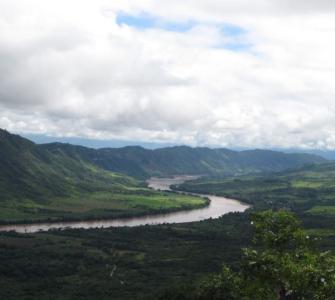The Marañón River, along with the Ucayali and Madre de Dios rivers, is one of the main tributaries of the Amazon in Peru. The Marañón basin also concentrates many of the planned hydroelectric projects in Peru. More than 20 dams, of which at least six are in advanced stages of planning or execution, can significantly affect the biodiversity and environmental services provided by this key basin of the Amazon.
The impacts of these projects are not limited to their direct effects (flooded towns and crops, displaced communities, deforestation, habitat loss, etc.), but also result in compounded impacts in terms of the hydrological cycles, sediment and nutrient transport, interruption of fish migratory and reproduction routes, and alteration of the flooding regime in the Amazon plains. Development pressures are intense. Peru’s economic growth, particularly the mining projects around the Marañón, demand energy. Brazil is also keen on energy supply from Peru. These demands have resulted in the large number of hydroelectric projects, and their subsequent cumulative impacts.
However, the environmental impact assessments of these hydroelectric projects are carried out at the individual project level, thus preventing a strategic basin-level analysis. To address this gap, CSF is carrying out an analysis of the economic costs of the compounded environmental impacts of five prioritized hydroelectric projects in the Marañón: Balsas, Chadín II, Veracruz, Rentema and Manseriche. By considering the impacts of these prioritized projects simultaneously, CSF will generate information to inform relevant stakeholders and decision-makers about the interactions among these projects, and the compounded costs of their impacts.
Publications:
Evaluación de efectos ambientales derivados de la instalación de cinco centrales hidroeléctricas en el Río Marañón - written by our partners at CORBIDI
Marañón: Costos social de los impacts acumulativos de cinco proyectos hidroeléctricos

